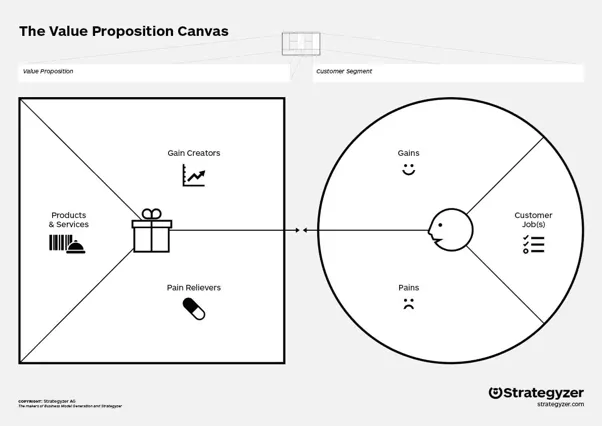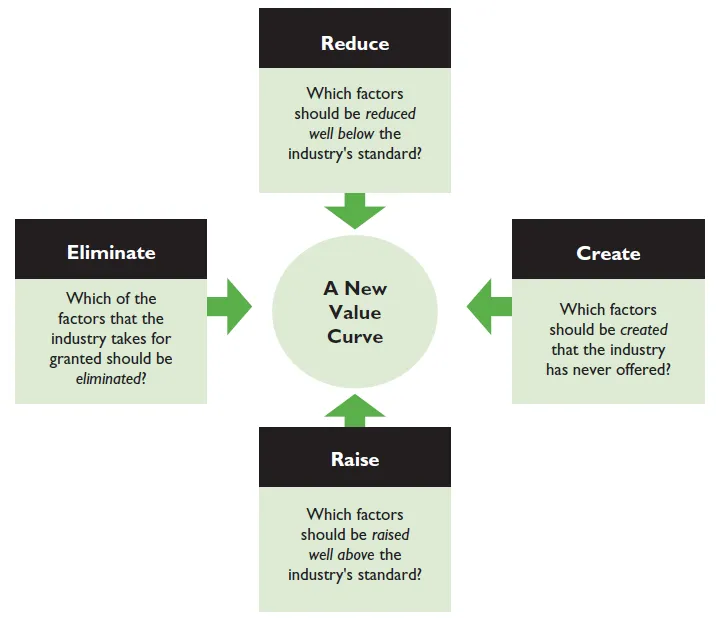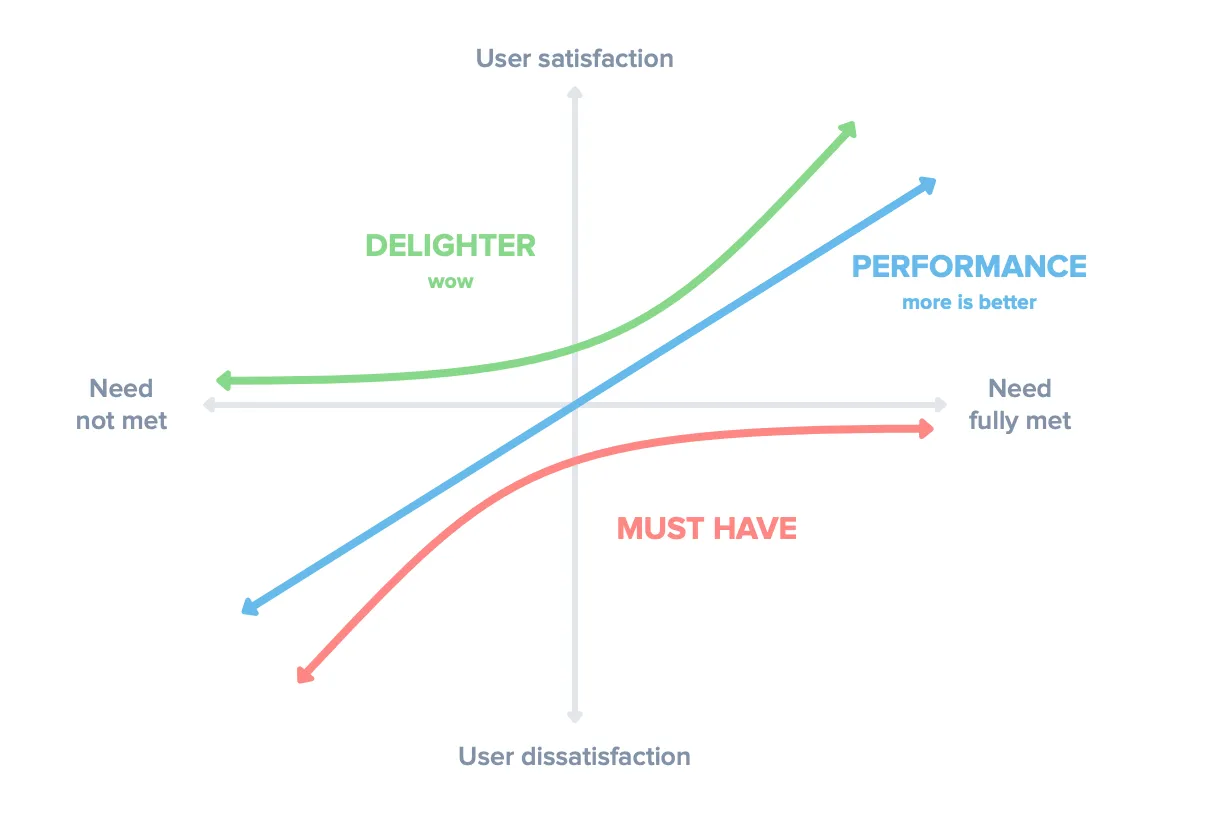Value Proposition
Baked Studio
12/07/2023
5 minutes
Creating a value proposition can seem overwhelming. However, a simplified four-step framework can make the process more manageable.
Step 1: Understand the Problem
When establishing a value proposition, the initial step involves thoroughly understanding potential users and their challenges.
To accomplish this, several discovery practices come into play. Typically, the process begins with user interviews and other generative research methodologies. After obtaining a clearer image of our target users, we can identify the most plausible assumptions regarding their difficulties and requirements and then probe further to validate them.
The objective is to pinpoint a specific demographic with distinct, unfulfilled needs. Although complete knowledge is impossible, we should strive to gain at least a foundational understanding of the users and their problems before moving forward.
To consolidate and visualize our problem discovery, we can use various tools, including:
User Persona
Customer Profile
Empathy Map
Problem Statement Canvas
Step 2: Explore the Solution Space
With a clear understanding of the problems we aim to solve and the audience we intend to serve, the next step involves crafting our value hypothesis.
The goal here is to delineate how our product or service can meet the unfulfilled needs of our customers. This can be accomplished by delivering a new form of value or alleviating their existing pain points.
Numerous frameworks and methodologies exist to assist in defining the value proposition. Let's take a look at some of the most widely used ones.
Value Proposition Canvas

One of the most recognized methods of formulating a value proposition is the Value Proposition Canvas by Strategyzer. This model uses a customer profile and a corresponding value map.
The Customer Profile includes:
Customer Jobs: What tasks is our customer aiming to perform? These could be functional, social, or even emotional. The Jobs to be Done framework fits this section well.
Pains: What are the potential negative outcomes of the job the customer is trying to achieve? What risks are tied to these jobs, and what barriers prevent customers from performing them?
Gains: What results or tangible benefits are our customers seeking from performing their jobs?
The Value Map consists of:
Products & Services: What products and services is our value proposition based on? What unique features does your product possess?
Pain Relievers: How does our product or service mitigate or eliminate customer pains?
Gain Creators: How does our product or service assist our customers in achieving their desired gains? How does it enhance the final benefit they receive?
Upon completing these, we must prioritize which jobs, pains, gains, features, relievers, and gain creators are most and least significant. We cannot fulfill all customer needs, so selecting our focus is crucial.
Which customer jobs do we intend to target? Which pains and gains are most vital for these jobs?
With a prioritized customer profile, we can fine-tune our value map, disregarding everything that doesn't address the gains and pains we've just identified. By doing so, we formulate a specific value proposition that tackles certain issues instead of attempting to cover everything.
In other words, our Value Proposition is the sum of the Gain Creators and Pain Relievers that align with customer Gains and Pains.
Next comes the Strategy Canvas.

When using a strategy canvas, the first move is to pinpoint attributes that our customers regard as highly valuable.
Attributes could be any factor our customers deem important when purchasing. These can encompass customer pains and desired gains, cost, accessibility, affordability, etc.
After identifying these attributes, we plot value curves of existing solutions our customers currently utilize. We should extend our perspective beyond direct competitors; let's consider - how our customers are currently addressing their problems. While they may use a competing product, they might also resort to more basic solutions like pen and paper. These value curves help us identify where alternative solutions excel and where they fall short.
Having identified the elements crucial to our customers and how alternative solutions meet these elements, we can begin to create our value curve. We achieve this by posing the subsequent four questions.

The following four questions serve as a structured approach to defining our unique value proposition:
Reduce: Are there factors where the quality or quantity can be significantly reduced? While this might initially seem counterintuitive, it is crucial to remember that trying to cover too many attributes can quickly dilute our value proposition.
Eliminate: Are there factors that can be completely removed? Just as with reduction, elimination helps to streamline our offering. Although it may seem like we're offering less, removing less significant attributes can free up resources to invest in attributes that provide greater value.
Raise: Are there aspects that are essential to our customers, and where raising the standard would make a noticeable difference? These areas allow us to improve upon what's already being offered in the market.
Create: Is there potential to introduce brand new attributes that currently do not exist in the market and could pleasantly surprise our customers? Creation can add an element of innovation and differentiation to our value proposition.
By focusing on reducing or eliminating less relevant attributes, we can use our resources more effectively and invest more heavily in attributes that truly matter to our customers.
Therefore, our value proposition can be defined as the sum of raised and created attributes.
The Value Proposition Grid is yet another approach that relies on comparison. It is based on the Kano Model.

The first stage is to determine the three primary types of value that our customers are looking for.
Essentials: These are the fundamental requirements that need to be met. They don't necessarily provide a competitive advantage - more doesn't necessarily equate to better. Once the basic need is fulfilled, we move forward. A car seatbelt serves as a good example: not having one is a problem, but having one is sufficient. Equipping a seat with ten seatbelts doesn't deliver extra value.
Performance Factors: This is the main area where competition occurs. In this category, more is definitely better. This could be anything from superior speed, better pricing, increased safety, to customization options, and so forth.
Delighters: These are innovative sources of value that are unexpected but can distinguish us from others and create powerful "wow" moments. This is comparable to creating brand-new attributes in the strategy canvas.
If we're struggling to categorize which attributes or features correspond to what type of value, we might need to revisit the first step and delve deeper into our customer research.
As with the value proposition and strategy canvas, we need to concentrate on the most crucial factors our customers care about. Once we've identified these factors, we can assess how other solutions perform in these areas.

Again, it's crucial not to limit our thinking solely to competitive products and services. Instead, we should consider all possible alternatives that our customers might use.
Now is the moment to decide how our offering will position itself within this grid. Given that essentials are non-negotiable, our task is to determine which performance benefits we aim to excel in and which we are willing to cede (after all, we can't excel in everything, can we?), and what unique delights we can offer.
As a general guideline, we should aim to excel in at least one performance benefit and introduce at least one unique delighter to ensure a competitive value proposition.
Value Proposition = Performance Benefits + Unique Delights
Ultimately, regardless of the framework or tool you choose, the key is to decide which core attributes or needs you will concentrate on and how you will outperform existing solutions significantly.
The frameworks suggested can be used independently or in conjunction with each other. For instance, we might use the value proposition canvas to theorize about the attributes, and then plot these attributes on the strategy canvas to see how our value proposition compares to alternatives.
Step 3. Make Sure a Sustainable Business Model Can Support Your Value Proposition

This phase is frequently overlooked, especially during the initial stages of seeking a product-market fit. The objective here isn't to formulate a comprehensive business model but to sketch a rough outline of how our value proposition could be sustained by one.
The reality is, even the most impressive and unique value proposition won't last in the market if it's incapable of effective distribution or value capture.
While the emphasis is on creating value for customers, we must not lose sight of the need to generate value for the business as well.
Step 4. Evaluate & Refine
Regardless of the hours invested in customer research and the careful consideration given to the creation of our value proposition, until it's tested, it remains a hypothesis.
Are the tasks we identified for our customers truly crucial for them? Are the pains and gains we've selected genuinely that significant? Are our unique delights as remarkable as we believe? Are we confident our customers will accept eliminating or reducing certain attributes? Can we generate revenue from this value proposition? Can we distribute it? And so on.
The subsequent steps — be they additional user interviews, rapid prototypes, or full-scale MVPs — are determined by the type of questions and the level of uncertainty.
Our value proposition and business models are just a series of hypotheses. More importantly, even after achieving a product-market fit, the market is constantly evolving. We must continuously refine our value proposition; otherwise, it will rapidly become outdated.
Summary
The process of formulating a value proposition commences with user research — it's essential to have a basic understanding of who our customers are and what they require.
Tools such as the value proposition canvas, strategy canvas, or value proposition grid can be used to conjecture our value proposition. Ultimately, however, these are just guidelines; any method could prove successful.
A value proposition needs to be backed by a business model that is both profitable and scalable to remain pertinent.
Continuous testing and iteration of the value proposition and business model is the most crucial aspect of the process — it's the only means to maintain competitiveness.
Although the framework outlines a four-step process, it's seldom a linear progression. The more knowledge we acquire, the more we'll bounce back and forth between steps, and that's entirely normal.
Product development is a complex process; the least we can do is to enjoy the journey.
Baked Studio
© 2024, Baked Design
Baked with ❤️ and dedication!
